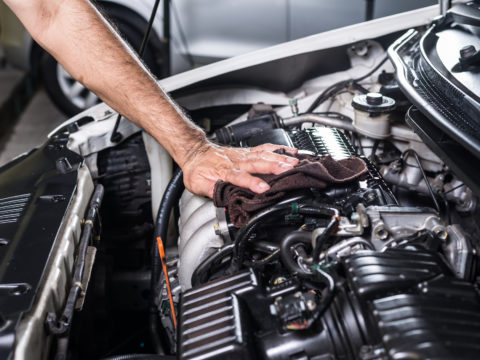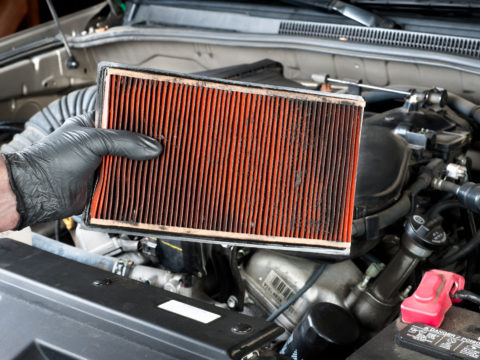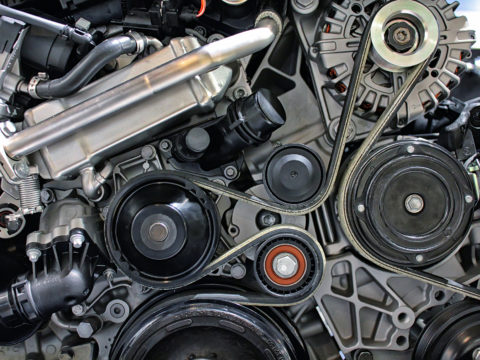Has your car been running a bit rough lately? Perhaps your fuel consumption is up, and your performance is down? If that’s the case, you might have a bad EGR valve.
Your EGR valve is a critical component of your car’s engine and exhaust system. Keeping it in top shape is paramount.
A few of the most common signs of a bad EGR valve are low fuel economy, abnormal engine sounds, and decreased performance.
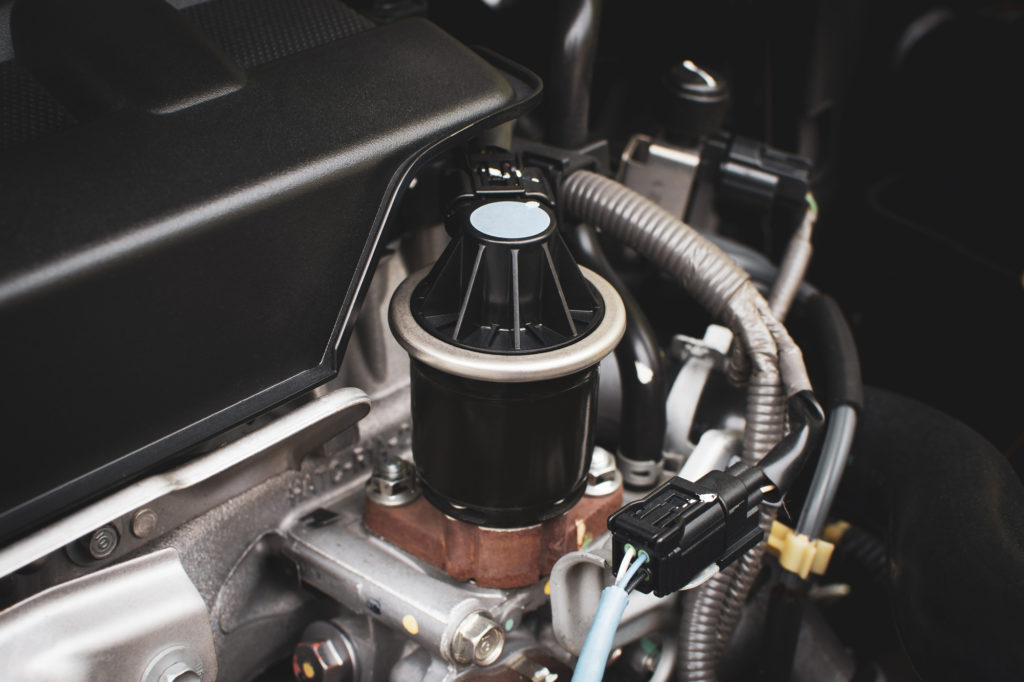
Contents
What Is an EGR Valve?
The exhaust gas recirculation valve is the part of your exhaust that helps reduce emissions.
It does so by recirculating exhaust fumes back through your system.
Since they test emissions at vehicle inspection centers, your EGR valve must be in working order.
What Does EGR Valve Do?
The EGR valve takes exhaust gas and recirculates it into your engine’s combustion chamber. In doing so, the EGR valve helps keep your engine cooler.
Since engine heat combined with O2 are the main components in pollutant gas, the EGR valve plays a significant role in preventing pollution.
Where Is the EGR Valve Located?
When you pop the hood on your car, you should be able to see the EGR valve near the intake manifold. A tube will connect the EGR valve and exhaust manifolds.
When you find the tube, follow it up to the EGR valve.
When Does EGR Valve Open?
Your EGR valve opens and closes based on the amount of power coming from your engine. The valve will be closed at idle or when you first start up.
However, once your engine is under load, the valve will open to help lower your engine’s temperature.
Each time it opens, it sends exhaust gas back through the intake manifold, allowing the air to cool.
What Does a Bad EGR Sound Like?
Like most engine issues, the tell-tale sign of a bad EGR valve is a loud rattling or knocking noise.
A rough idle when you start your vehicle is an excellent auditory indicator of a bad EGR valve.
Symptoms of a Bad EGR Valve
Even if you’re unfamiliar with cars, the symptoms of a bad EGR valve can be easy to spot.
If you notice any of the following symptoms, reach out to a trusted mechanic right away.
Rough Idle
As previously mentioned, a rough idle could simply be loud. On the other hand, a rough idle could consist of shaking or vibrating when you start your car.
This particular symptom could indicate several engine issues, but it’s a clear indicator of a bad EGR valve.
Overheating Engine
If your EGR valve is clogged or stuck closed, it isn’t allowing your engine to cool properly. When your engine is unable to regulate its temperature, it could overheat.
You’ll also probably smell unburnt fuel and hear the engine knocking as your engine gets hotter.
Check Engine Light Illuminated
Often the bane of a car owner’s existence, the Check Engine light is another sign your EGR valve might be defective. Your car is full of sensors, including in your engine.
If your EGR is faulty or not working correctly, one of those sensors might detect that.
Frequent Stalling
If you’ve noticed your car stalling out when you’re idling, it could be due to your EGR valve.
When your EGR valve is stuck open, it’s continually letting exhaust gasses through.
That could lead your engine to stall out when it’s not under load.
Decreased Engine Power
An engine that isn’t working to its full capacity will often have decreased power. Your EGR valve is one engine component that can cause low power.
If your EGR valve is faulty, you could see rough acceleration or sluggishness when you step on the accelerator.
You might hear the “vroom” of acceleration, but your car will feel like it’s struggling.
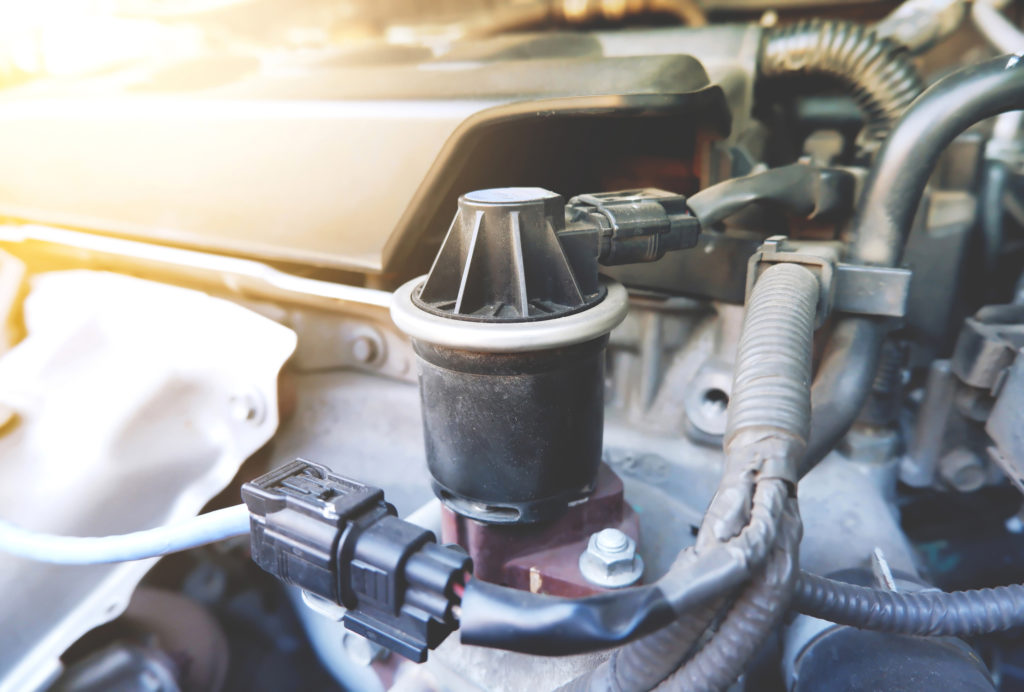
What Problems Does a Bad EGR Valve Cause?
A bad EGR valve can cause several problems for your vehicle.
Specifically, it can affect your engine in the following ways:
Misfire
A faulty EGR valve can cause your engine to misfire on startup or while idling.
Since the EGR regulates your engine’s temperature, fuel combustion can be affected when the EGR isn’t working.
When that happens, your engine might stutter, and you’ll hear a bang, pop, or backfire.
Failed Emissions Inspection
Most states require emissions inspections regularly. In some states, it’s one of the only things they check. If your car fails an emissions inspection, it’s likely due to a stuck or clogged EGR valve.
You’ll need to repair it before your vehicle can pass inspection.
Increased Fuel Consumption
Another common symptom of a bad EGR valve is decreased fuel economy. This typically occurs when the EGR valve is stuck open. An open valve keeps the engine cooler than necessary.
A cooler engine requires more power to ignite your fuel. When that happens, your vehicle will need more fuel to work properly.
Fuel Odor
A faulty EGR valve will cause more hydrocarbons to leak out of your engine into your exhaust.
Also, since the bad valve won’t allow all the fuel to burn, you might smell unburned gasoline when your car is running. This is also a sign of high fuel consumption.
Will a Faulty EGR Damage Engine?
A faulty EGR can cause your engine to overheat to dangerous temperatures.
An engine that’s too hot can cause pistons to seize or cause damage to the EGR solenoid.
Your engine could seize entirely if you don’t address the problem promptly. Once an engine seizes, there’s typically no coming back.
Can a Car Run With a Bad EGR Valve?
A car can run with a bad EGR valve, but not indefinitely. Eventually, your engine will succumb to too-high temperatures. You’ll also have decreased performance and higher fuel costs.
To ensure your vehicle’s longevity, you should take it to a mechanic as soon as you suspect an EGR valve issue.
How To Prevent EGR Valve Failure
The best way to prevent EGR valve failure is to keep up with scheduled maintenance.
Whether you do your own maintenance or take it to a mechanic, the EGR valve should be part of your inspection.

